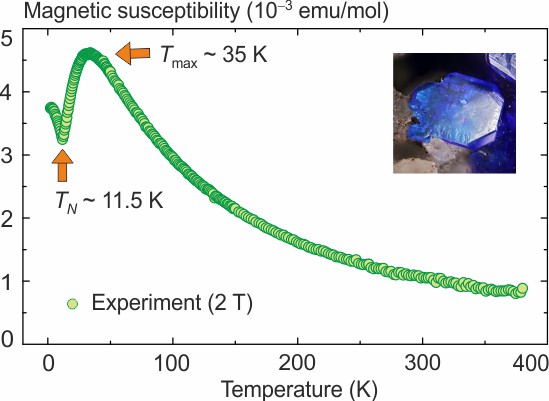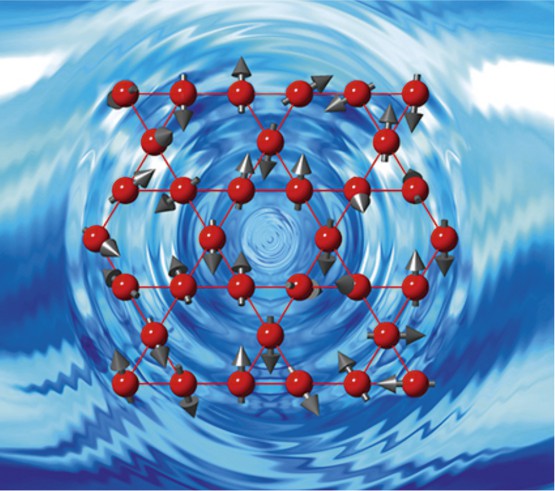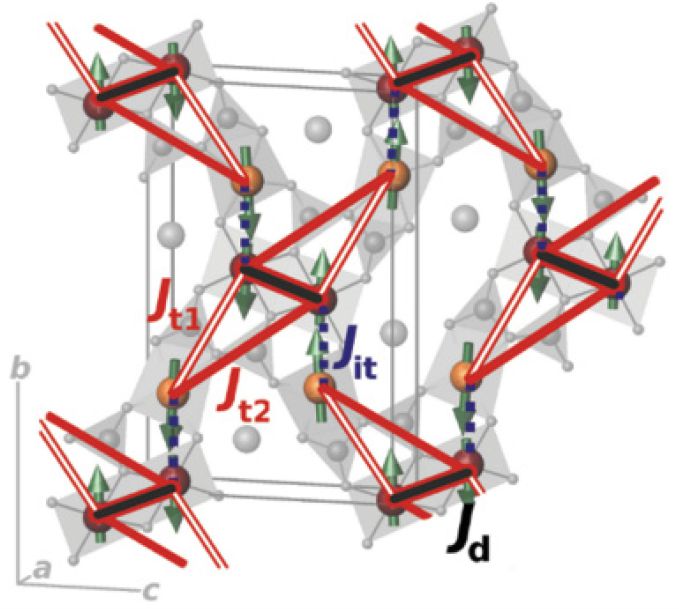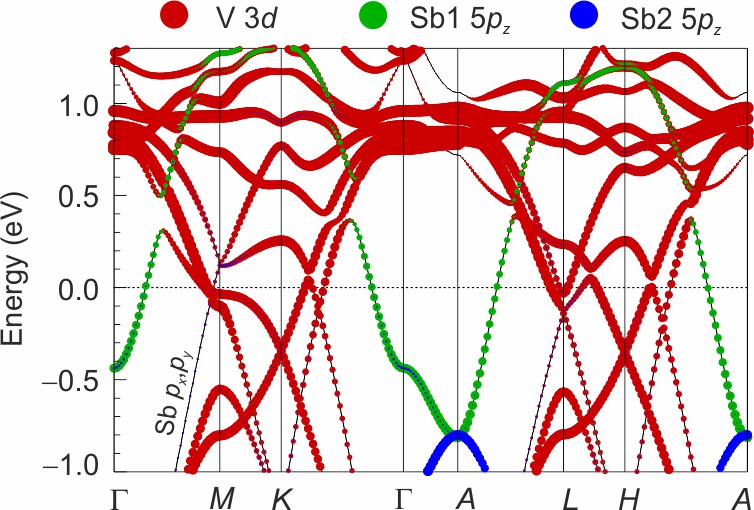
Characterization of new magnetic compounds
Our colleagues from chemistry and mineralogy constantly discover new compounds, either prepared in the lab or found in nature as minerals.
These compounds feature invariably different atomic arrangements and potentially interesting forms of magnetism if magnetic ions are
contained in the structure. The goal of this project is the experimental magnetic characterization of such new compounds. On completing
the project, you will be able to conclude on the type of magnetic interactions in the material, whether it is magnetically ordered or not,
and whether frustration of magnetic interactions may be important. These magnetic phenomena will typically take place well
below room temperature, so we may also explore the perspectives of magnetocaloric applications (magnetic cooling). In this project,
you will learn how to measure magnetization and specific heat and operate some of the modern cryostats reaching temperatures as low as
2 degrees away from absolute zero.
2023 topic: magnetism of quasi-2D rare-earth oxoselenides

Exploration of quantum magnets
Magnetism is a quantum phenomenon. However, not all magnets are truly quantum. They can often be viewed as systems of interacting
arrows (spins) on a periodic lattice, with almost no quantum physics involved. We are interested in a narrower group of magnets,
so-called quantum magnets, where spin quantization plays a significant role. In order to assess these quantum effects, we need
experimental input from, e.g., magnetization and neutron diffraction, but also a solid microscopic understanding of the material.
By "microscopic" we imply an evaluation of individual magnetic interactions in order to understand the nature of local spins and
the "quantumness" of the collective state that they form. On the practical level, it means that you will be involved in a brief
experimental characterization, such as a magnetization measurement, but then (or even simultaneously) you will calculate band structure
using state-of-the-art numerical codes and extract magnetic interaction parameters for a comparison to the experimental data you have collected.
2023 topic: spin-ladder magnetic units in PbNi2Ga(PO4)3

Magnetic interactions and magnetic models
Is it possible to predict magnetic properties of a given material? Potentially yes, by calculating its electronic structure and
extracting magnetic interaction parameters. More often we do not try to make predictions, though, and rather apply this methodology
to those systems where an interesting behavior was previously revealed by experiments. Running calculations helps us to pin down the
nature of magnetic interactions and their origin. This information is pivotal for finding the right theoretical framework that fits
to our material, but also for a rational design of new materials because we can't improve a material without understanding what
causes its properties. In this project, you will learn how to use modern computing facilities and calculate band structures of solids
using state-of-the-art numerical software. These calculations will be pitched to calculating magnetic interaction parameters and
constructing magnetic models for a comparison with the experiment.
2023 topics:
1) Mn chalcogenides: antiferromagnetism vs. sawtooth chains
2) Gd-based polymeric frameworks: what makes them promising magnetocaloric materials?

Electronic structure of topological and superconducting materials
Electronic band structure, which we learn in solid-state physics, comes in its full glory in metals, more specifically, in
topological and superconducting metals because their unusual transport properties intimately depend on the composition of states
near the Fermi level. In this project, you will calculate band structure of a prospective material of this group
as a function of pressure or strain, and try to understand why electronic properties change, e.g., why superconductivity is induced
or suppressed. This project will involve similar numerical machinery as the previous one, but here
you will delve into band structure of solids, learn how to analyze it, and eventually see how it determines electronic properties.
2023 topic: what drives pressure-induced superconductivity in kagome metals?




